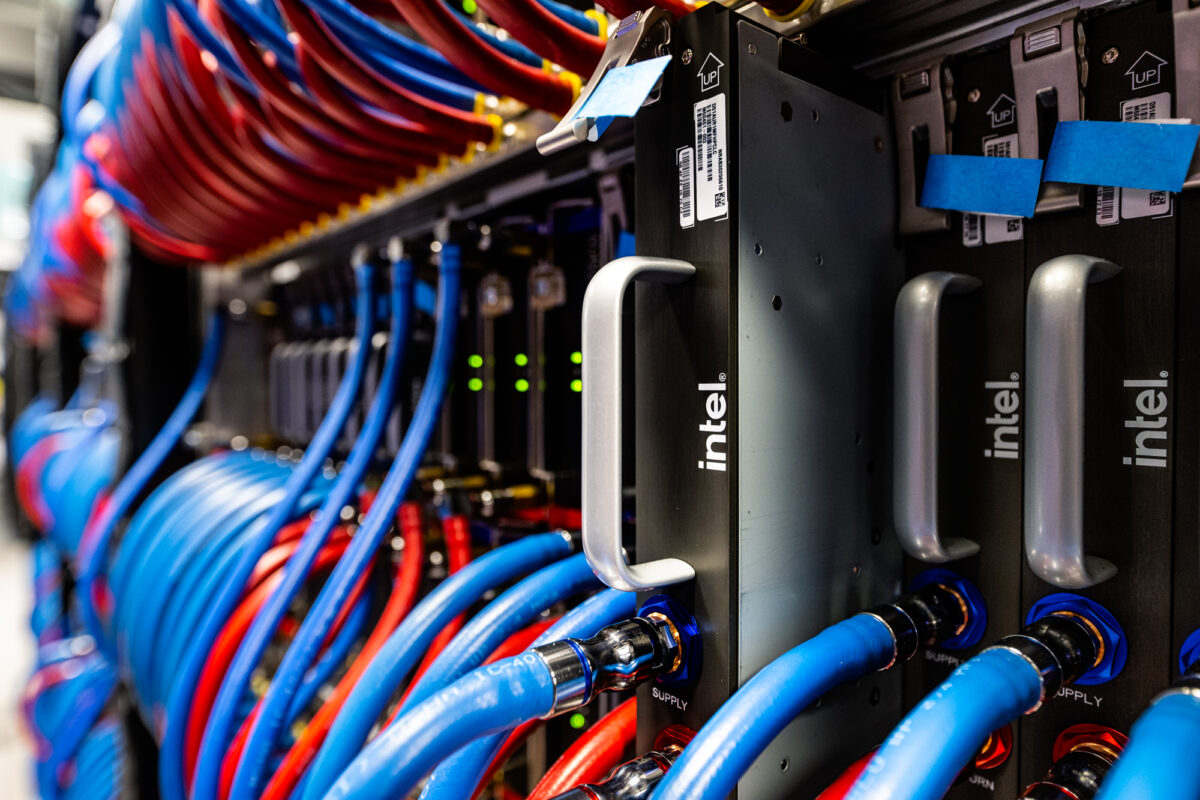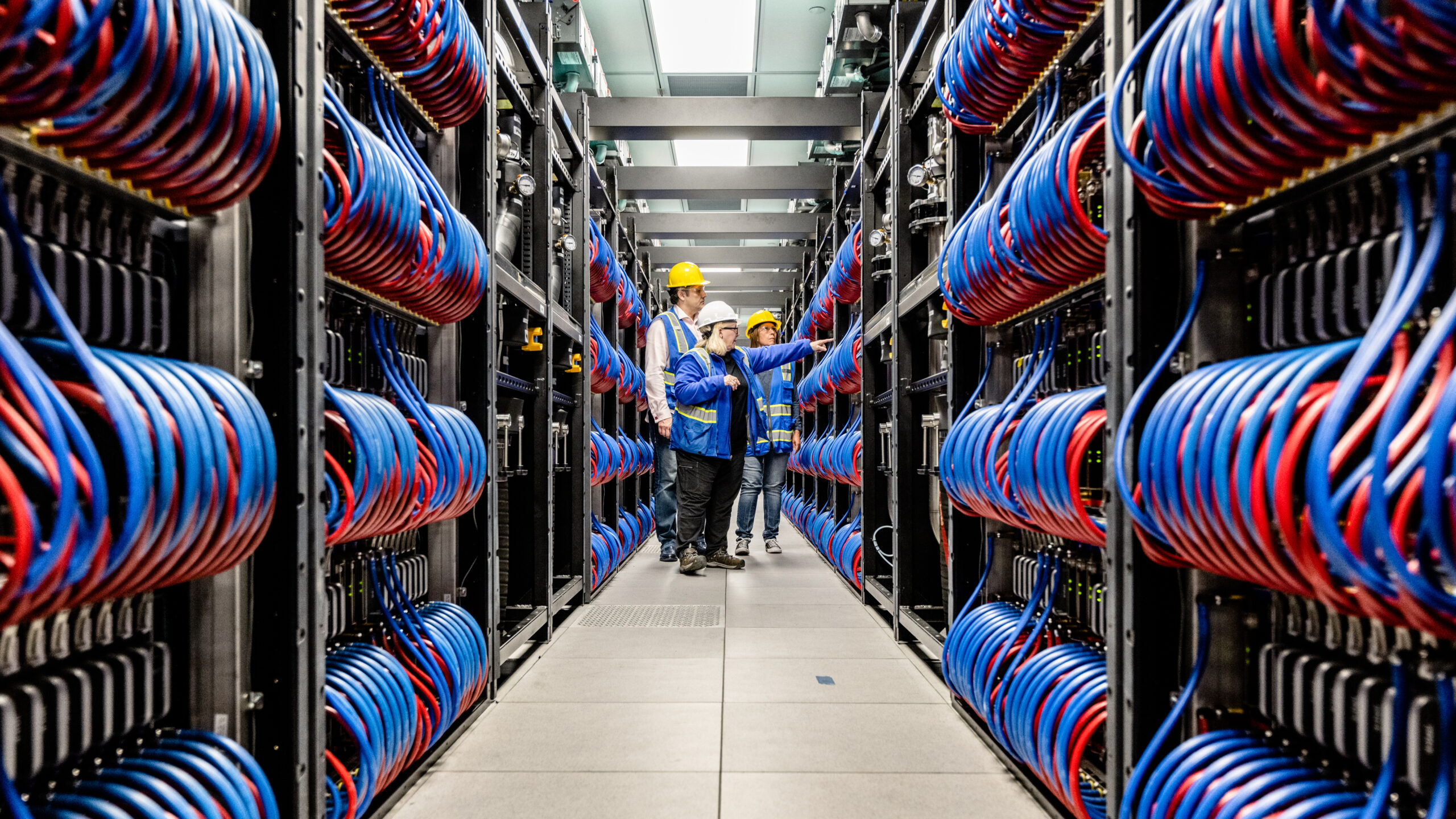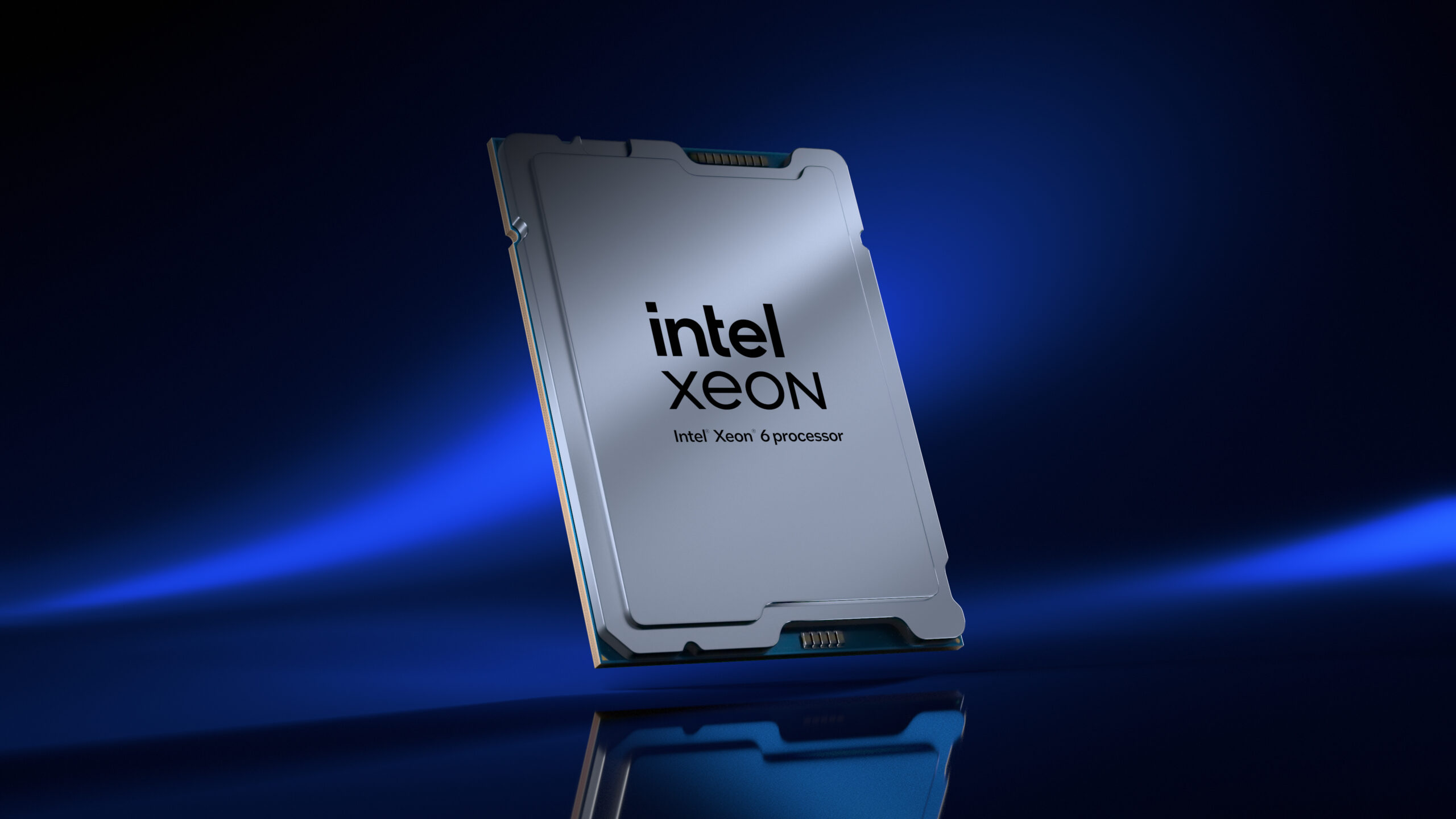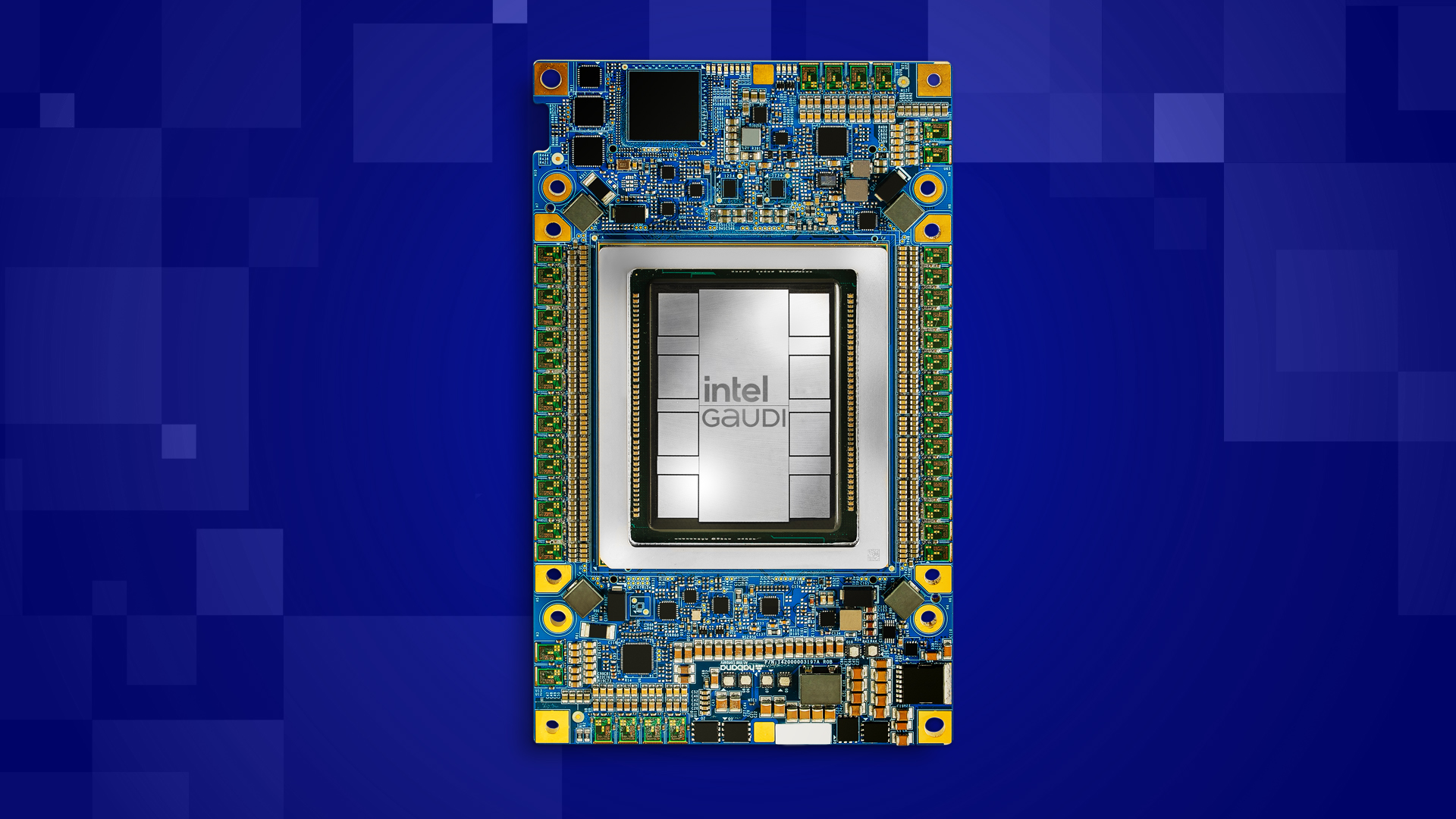Aurora Supercomputer Ranks Fastest for AI

On May 13, 2024, at International Supercomputing Conference 2024, Intel, Argonne National Laboratory and Hewlett Packard Enterprise announced that the Aurora supercomputer has broken the exascale barrier and leads as the highest ranked supercomputer for high performance computing and artificial intelligence convergence. (Credit: Argonne National Laboratory)
At ISC 2024, Intel announces Aurora is the fastest AI supercomputer, has broken the exascale barrier, and details the importance of an open ecosystem in HPC and AI.
What’s New: At ISC High Performance 2024, Intel announced in collaboration with Argonne National Laboratory and Hewlett Packard Enterprise (HPE) that the Aurora supercomputer has broken the exascale barrier at 1.012 exaflops and is the fastest AI system in the world dedicated to AI for open science, achieving 10.6 AI exaflops. Intel will also detail the crucial role of open ecosystems in driving AI-accelerated high performance computing (HPC).
“The Aurora supercomputer surpassing exascale will allow it to pave the road to tomorrow’s discoveries. From understanding climate patterns to unraveling the mysteries of the universe, supercomputers serve as a compass guiding us toward solving truly difficult scientific challenges that may improve humanity.”
Why It Matters: Designed as an AI-centric system from its inception, Aurora will allow researchers to harness generative AI models to accelerate scientific discovery. Significant progress has been made in Argonne’s early AI-driven research. Success stories include mapping the human brain’s 80 billion neurons, high-energy particle physics enhanced by deep learning, and drug design and discovery accelerated by machine learning, among others.

On May 13, 2024, at International Supercomputing Conference 2024, Intel, Argonne National Laboratory and Hewlett Packard Enterprise announced that the Aurora supercomputer has broken the exascale barrier. (Credit: Argonne National Laboratory)
Download all images (10 MB)
Aurora Supercomputer's Details: The Aurora supercomputer is an expansive system with 166 racks, 10,624 compute blades, 21,248 Intel® Xeon® CPU Max Series processors and 63,744 Intel® Data Center GPU Max Series units, making it one of the world's largest GPU clusters. Aurora also includes the largest open, Ethernet-based supercomputing interconnect on a single system of 84,992 HPE slingshot fabric endpoints. Aurora supercomputer came in second on the high-performance LINPACK (HPL) benchmark but broke the exascale barrier at 1.012 exaflops utilizing 9,234 nodes, only 87% of the system. Aurora supercomputer also secured the third spot on the high-performance conjugate gradient (HPCG) benchmark at 5,612 teraflops per second (TF/s) with 39% of the machine. This benchmark aims to assess more realistic scenarios providing insights into communication and memory access patterns, which are important factors in real-world HPC applications. It complements benchmarks like LINPACK by offering a comprehensive view of a system's capabilities.
How AI is Optimized: At the heart of the Aurora supercomputer is the Intel Data Center GPU Max Series. The Intel Xe GPU architecture is foundational to the Max Series, featuring specialized hardware like matrix and vector compute blocks optimized for both AI and HPC tasks. The Intel Xe architecture’s design that delivers unparalleled compute performance is the reason the Aurora supercomputer secured the top spot in the high-performance LINPACK-mixed precision (HPL-MxP) benchmark – which best highlights the importance of AI workloads in HPC.
The Xe architecture's parallel processing capabilities excel in managing the intricate matrix-vector operations inherent in neural network AI computation. These compute cores are pivotal in accelerating matrix operations crucial for deep learning models. Complemented by Intel's suite of software tools, including Intel® oneAPI DPC++/C++ Compiler, a rich set of performance libraries, and optimized AI frameworks and tools, the Xe architecture fosters an open ecosystem for developers that is characterized by flexibility and scalability across various devices and form factors.
Advancing Accelerated Computing with Open Software and Compute Capacity: In his special session at ISC 2024, on Tuesday, May 14 at 6:45 p.m., (GMT+2) Hall 4, Congress Center Hamburg, Germany, CEO Andrew Richards of Codeplay, an Intel company, will address the growing demand for accelerated computing and software in HPC and AI. He will highlight the importance of oneAPI, offering a unified programming model across diverse architectures. Built on open standards, oneAPI empowers developers to craft code that seamlessly runs on different hardware platforms without extensive modifications or vendor lock-in. This is also the goal of the Linux Foundation’s Unified Acceleration Foundation (UXL), in which Arm, Google, Intel, Qualcomm and others are developing an open ecosystem for all accelerators and unified heterogeneous compute on open standards to break proprietary lock-in. The UXL Foundation is adding more members to its growing coalition.
Meanwhile, Intel® Tiber™ Developer Cloud is expanding its compute capacity with new state-of-the-art hardware platforms and new service capabilities allowing enterprises and developers to evaluate the latest Intel architecture, to innovate and optimize AI models and workloads quickly, and then to deploy AI models at scale. New hardware includes previews of Intel® Xeon® 6 E-core and P-core systems for select customers, and large-scale Intel® Gaudi® 2-based and Intel® Data Center GPU Max Series-based clusters. New capabilities include Intel® Kubernetes Service for cloud-native AI training and inference workloads and multiuser accounts.
What’s Next: New supercomputers being deployed with Intel Xeon CPU Max Series and Intel Data Center GPU Max Series technologies underscore Intel’s goal to advance HPC and AI. Systems include Euro-Mediterranean Centre on Climate Change’s (CMCC) Cassandra to accelerate climate change modeling; Italian National Agency for New Technologies, Energy and Sustainable Economic Development's (ENEA) CRESCO 8 to enable breakthroughs in fusion energy; Texas Advanced Computing Center (TACC), which is in full production to enable data analysis in biology to supersonic turbulence flows and atomistic simulations on a wide range of materials; as well as United Kingdom Atomic Energy Authority (UKAEA) to solve memory-bound problems that underpin the design of future fusion powerplants.
The result from the mixed-precision AI benchmark will be foundational for Intel’s next-generation GPU for AI and HPC, code-named Falcon Shores. Falcon Shores will leverage the next-generation Intel Xe architecture with the best of Intel® Gaudi®. This integration enables a unified programming interface.
Early performance results on Intel® Xeon® 6 with P-cores and Multiplexer Combined Ranks (MCR) memory at 8800 megatransfers per second (MT/s) deliver up to 2.3x performance improvement for real-world HPC applications, like Nucleus for European Modeling of the Ocean (NEMO), when compared to the previous generation,1 setting a strong foundation as the preferred host CPU choice for HPC solutions.
More Context: Intel Tiber Developer Cloud | UXL Foundation | Intel Takes Next Step Toward Building Scalable Silicon-Based Quantum Processors | Intel Gaudi, Xeon and AI PC Accelerate Meta Llama 3 GenAI Workloads
The Small Print:
1 See ISC 2024 section of intel.com/performanceindex for workloads and configurations. Your results may vary.
Intel technologies may require enabled hardware, software or service activation.
Performance results are based on testing as of dates shown in configurations and may not reflect all publicly available updates. No product or component can be absolutely secure.
Intel does not control or audit third-party data. You should consult other sources to evaluate accuracy.



